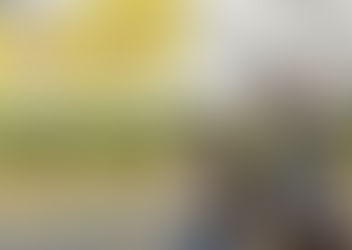Why Planting Natives in the Fall
- Pollinator Project RV

- Sep 22, 2023
- 3 min read
Updated: Sep 24, 2023

By Anna Ehlers, PPRV Summer 2023 Intern
As fall begins, we notice many things: cloudy days, cooler temperatures, and increased rainfall. How can we use these conditions to our advantage when planting our pollinator garden?
Planting in the fall provides many benefits:
Reduced occurrence of transplant shock
More water via rainfall
Warm soil temperatures
Warm days, cool nights
Plants shift their energy towards root growth
What is Transplant Shock?
Transplant shock occurs when a plant is being moved into a new environment and can cause symptoms such as: wilting, poor root growth, leaf discoloration, stunted growth, or death of the plant. Due to the cooler conditions in the fall, the issues caused by transplant shock may be reduced since the plant is going into dormancy.
What is Dormancy?
A period of time where the plant conserves energy and doesn't produce foliage or roots. The plant ‘falls asleep’ during the cold winter months and ‘wakes up’ in the warm spring months. Dormancy is induced when there are consistent cold temperatures and shorter days.
The Main Takeaway:
Root establishment in the fall better prepares the plants for the spring by establishing a strong root system before the plant enters dormancy. With the roots well established, the plant is ready to start putting more energy to growing foliage when spring starts.
How to Plant Your New Plant
Dig a hole! Make sure it's deep enough that the roots can sit in comfortably. The crown of the plant (the bottom of the stem before the roots start) should sit right at soil level, or just a little above if you are planning to add mulch around the plant.
Loosen the roots! Loosening the roots encourages them to grow outwards, beyond the shape of the original container. You can do that by gently massaging the root ball. If the roots are growing in a circular pattern, ‘root bound’, additional pressure may be needed to separate the roots. If any of the roots are squishy or dead, they need to be removed before planting.
Note: some native shrubs, like manzanitas and madrones, do NOT want to have their roots touched.
Put your plant in the hole! Place your plant in the center of the hole and fill in dirt on all sides of the plant. Be sure to move the soil around to fill in any air pockets, and pat the soil in place, but not enough to compact the soil - air and water need to be able to move through. If the plant is unable to hold itself up, you may need a deeper hole or a support structure to keep the plant upright.

Roots have been separated after being removed from the container

Plant in the hole with crown visible at the soil line

Soil has been filled in around the plant
What should you do after planting your new plant?
Give your plant a good drink! The plant needs to adjust to its new environment, and giving it lots of water will help it adjust. Water slowly to make sure the water spreads throughout the root ball. Make sure that the soil is wet to the touch in the area surrounding the roots. If the surrounding soil remains dry, it will stress the plant.
Give your plant a blanket! Covering the area around your plant with wood chips or fine gravel will provide a layer of protection from the elements. The cover regulates the soil temperature and can keep the soil warmer in the winter and cooler in the summer, allowing for roots to continue growing. Wood chips degrade over the course of years and in doing so, add nutrients to the soil. Keep the mulch a few inches away from the crown of the plant.
Give your plant a haircut! Trimming old leaves helps the plant focus its energy on growing roots. With fewer leaves, the plant will be less stressed because it won’t be using its energy to keep the foliage alive while also adjusting to a new environment.
So get out there and plant native plants this fall, and look forward to a beautiful garden for the pollinators this spring! Happy planting!
Looking for more ideas and resources?
Check out our plant and garden videos here.
Find our garden guides, seeds, and more here.
Learn more about our upcoming Native Plant Sale for the Pollinators here.




























Comments